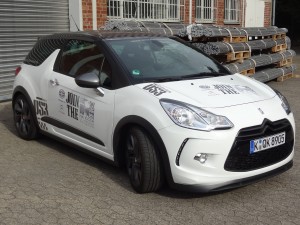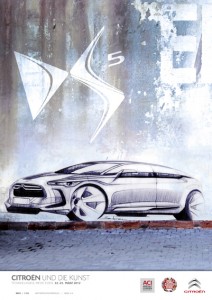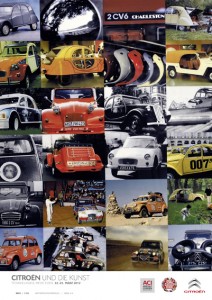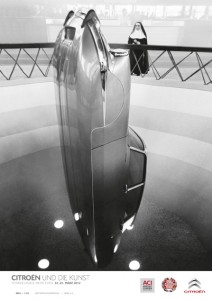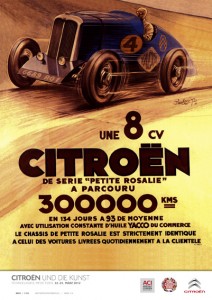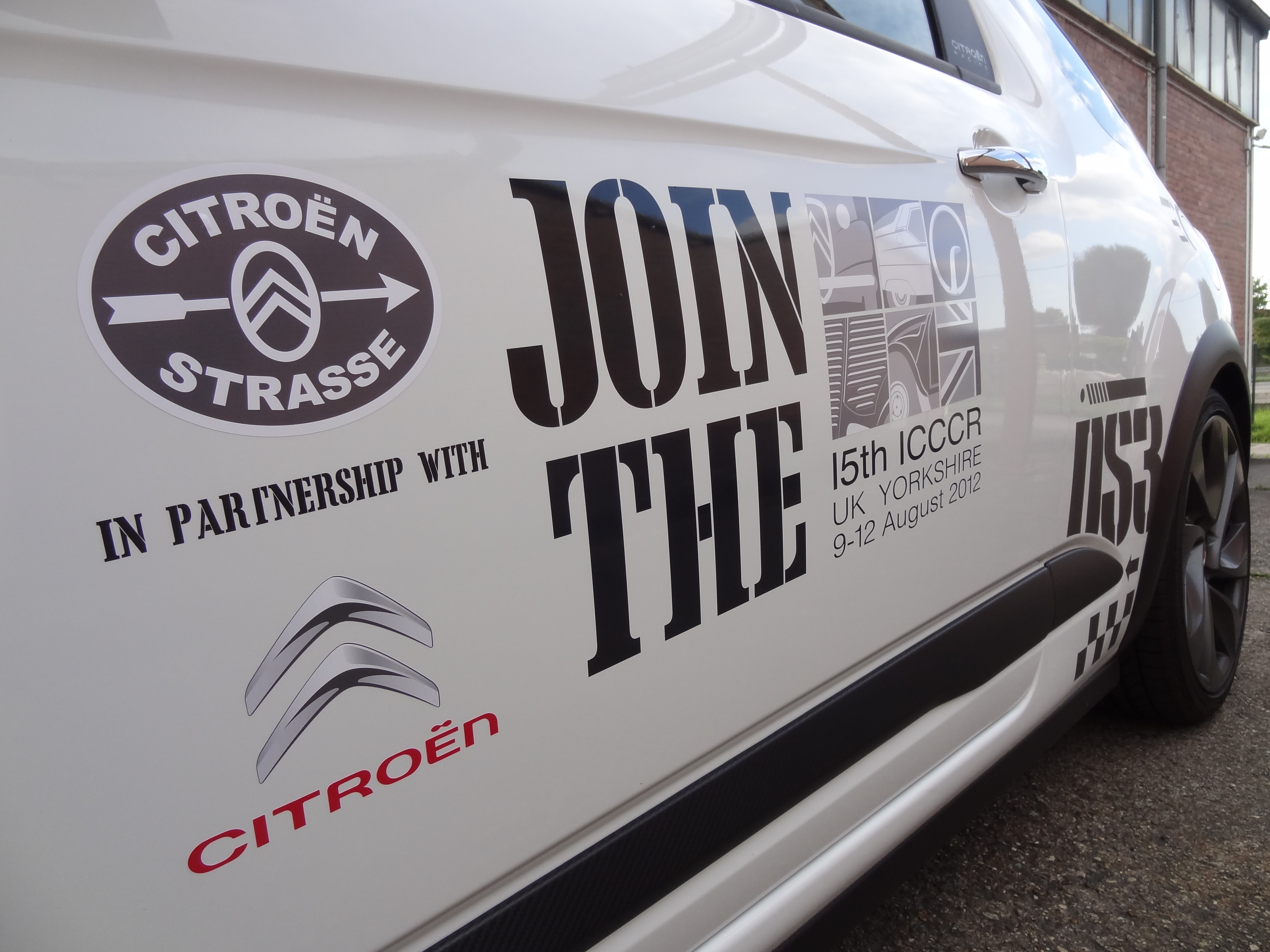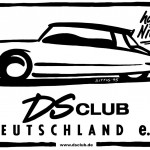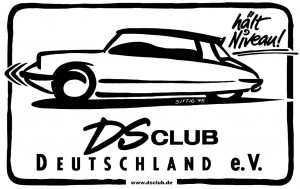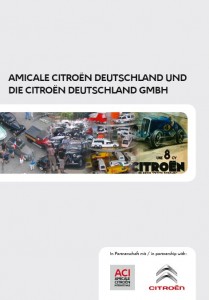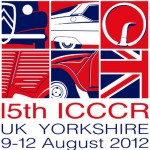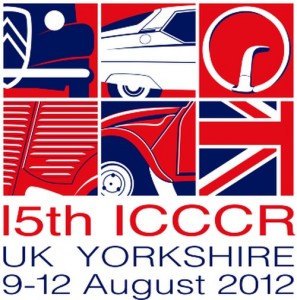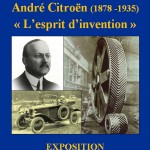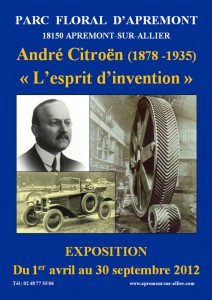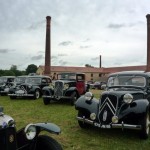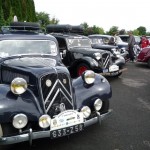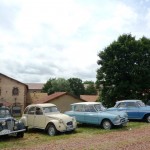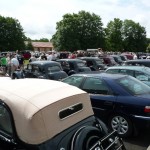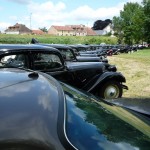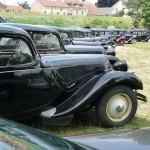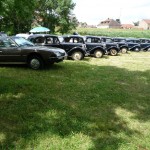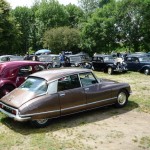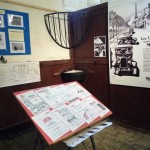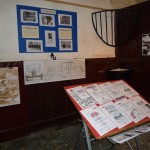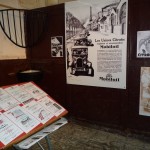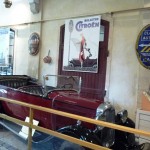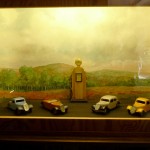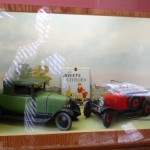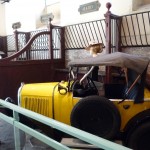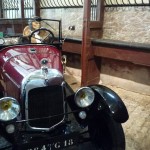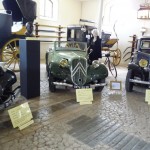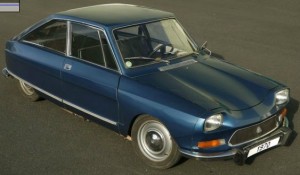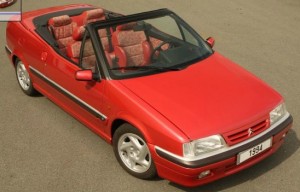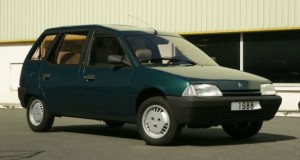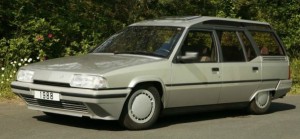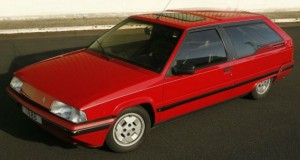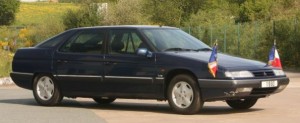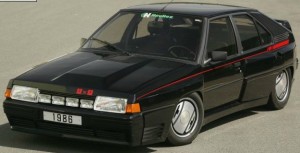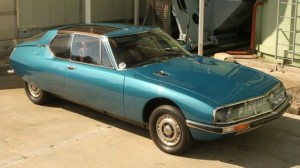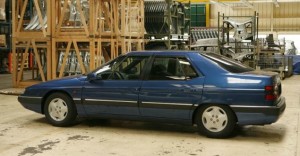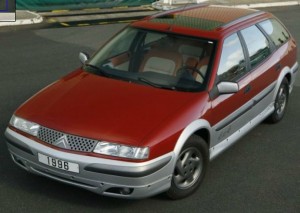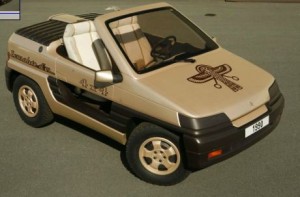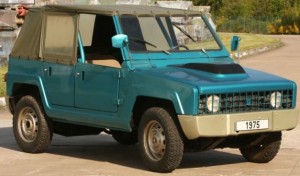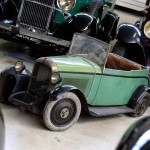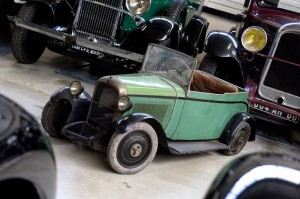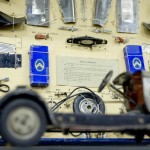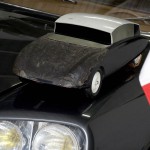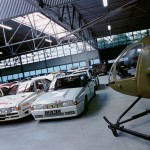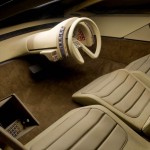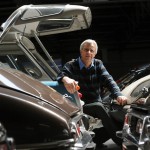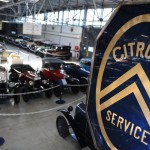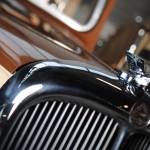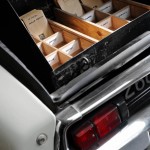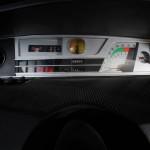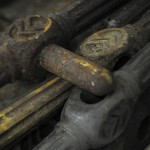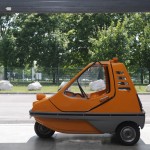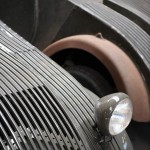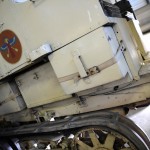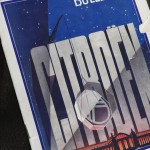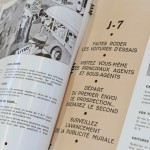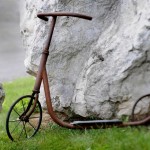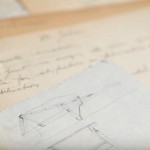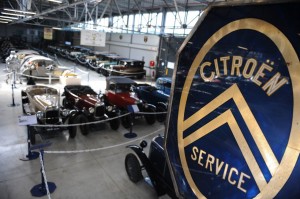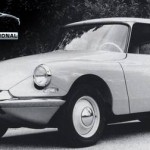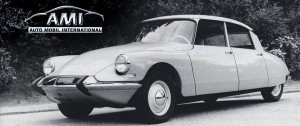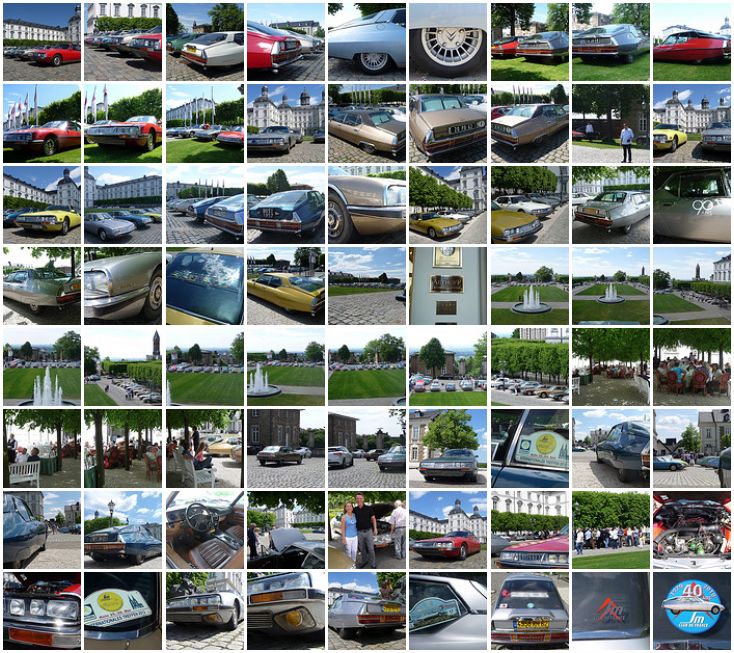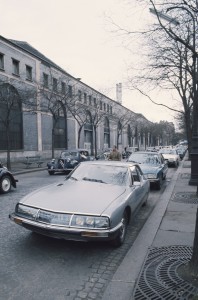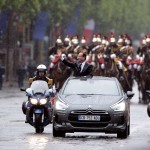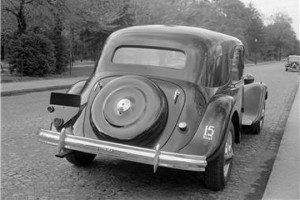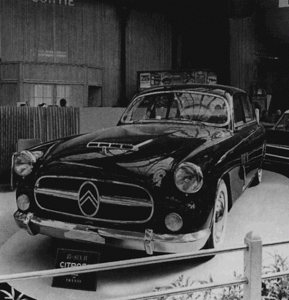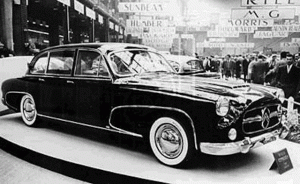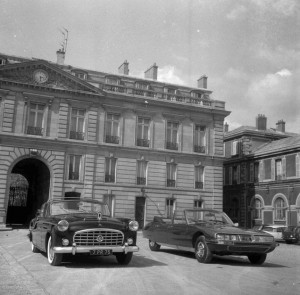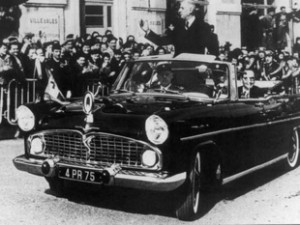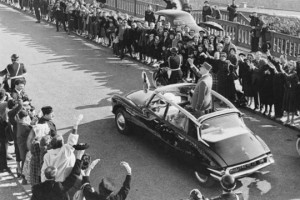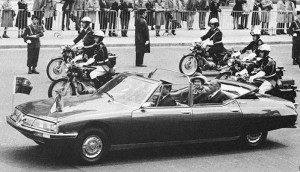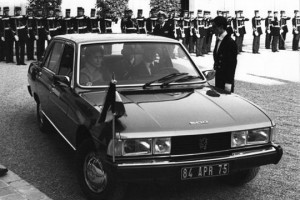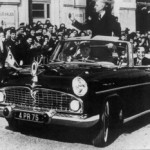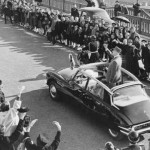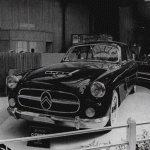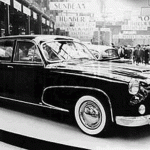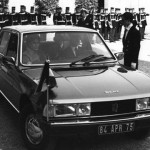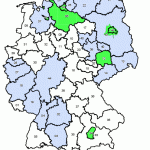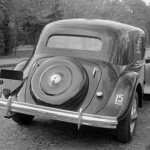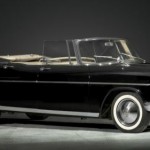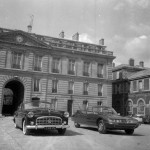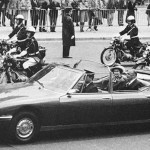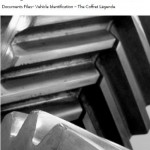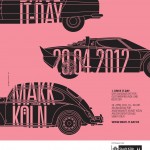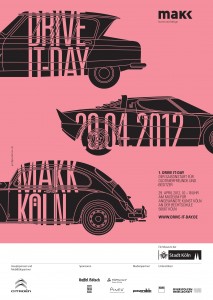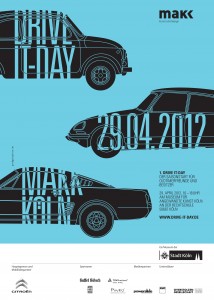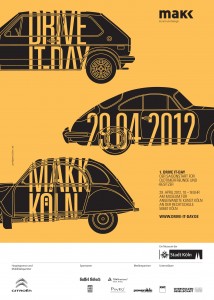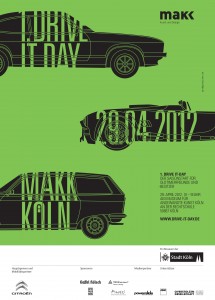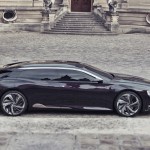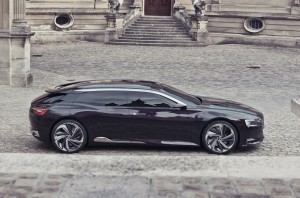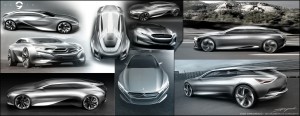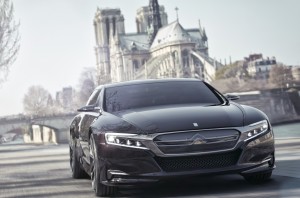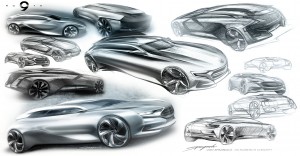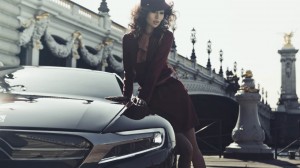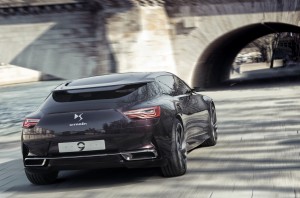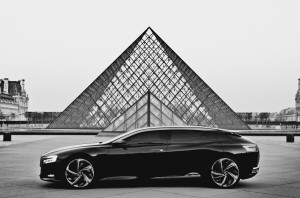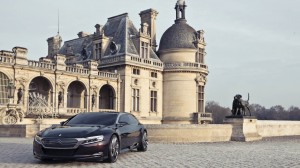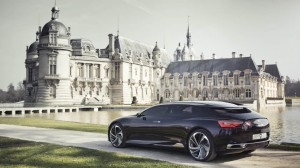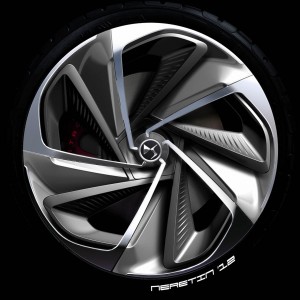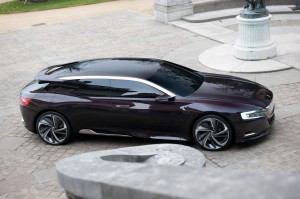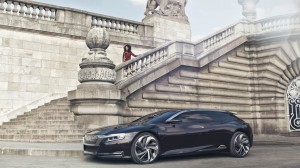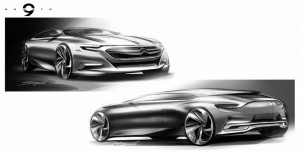
(English below)
Die Amicale Citroën unterhält seit längerem einen regelmäßigen Informationsaustausch mit dem VDA, dem Verband der deutschen Automobilindustrie. Als eine der größten Lobbyvereinigungen hierzulande hat der VDA seit längerem die Marktentwicklungen beobachtet und vor einigen Jahren eine eigene historische Fachabteilung etabliert, um dem wachsenden Interesse und Anforderungen an die Organisation gerecht werden zu können.
Viele der vom VDA im Umfeld historischer Automobile adressierten Themen decken sich mit den Ambitionen und Aufgaben der im Jahr 2004 gegründeten Amicale Citroën. Insofern unterstützt der Dachverband der nicht-kommerziellen Citroën- und Panhard-Clubs in Deutschland die VDA-Aktivitäten in diesem Zusammenhang. Gleichzeitig gilt es, die Wahrung der Interessen für die eigenen Clubs und ihrer Mitglieder, sowie den “französisch-deutschen Besonderheiten” zu gewährleisten: der Fahrzeuge, der in ihnen umgesetzten Technologien, der Menschen, die sie bewegen und erhalten, und der Kreativität und Innovation, die als Leitmotiv über Jahrzehnte den Automobilbau bei Citroën geprägt haben.
Zu Beginn des Jahres 2007 richtete der VDA das Referat “Historische Fahrzeuge” ein, um die Interessen der ständig größer werdenden Gruppierung von Oldtimerfreunden und -fahrern zu unterstützen. Besonders die immer strengeren Gesetzesinitiativen bezüglich Umwelt und Verkehrssicherheit sorgten in der Oldtimergemeinde für Verunsicherung, da bei einem großen Teil der historischen Fahrzeuge eventuell notwendige Modifikationen zur Erreichung neuer Standards aus technischen Gründen nicht möglich sind.
Die Traditionsarbeit hat auch bei den Mitgliedsunternehmen des VDA immer größere Bedeutung. Die deutschen Automobilhersteller nutzen ihre Historie, um ihre Markenwerte stärken, um Kunden und Mitarbeitern Orientierung zu geben und um sich von Mitbewerbern zu differenzieren. Jeder Fahrer eines Oldtimers wird als Markenbotschafter gesehen. Deswegen ist das steigende Interesse in der Bevölkerung an diesem Thema eine erfreuliche Entwicklung darstellt.
Gemeinsam mit den Traditionsverantwortlichen der deutschen Automobilhersteller Audi, BMW, Daimler, Ford, Opel, Porsche und Volkswagen sowie den Zuliefererfirmen Bosch und ZF Friedrichshafen wurde das Ziel formuliert:
Rahmenbedingungen schaffen, die den historischen Fahrzeugen das problemlose Betreiben auf öffentlichen Straßen auch künftig ermöglichen und erleichtern.
Dafür wurden auch Strukturen innerhalb des Verbands geschaffen: Im VDA-Ausschuss “Historische Fahrzeuge” sind AUDI, BMW, Daimler, Ford, Opel, Porsche und Volkswagen vertreten, sowie Zuliefererindustrie Bosch und ZF repräsentiert. Der Ausschuss trifft sich mindestens zweimal jährlich und erörtert v.a. relevante politische Themen.

Matthias Wissmann, Präsident des VDA
Immer mehr Oldtimer, immer mehr im Fokus
Die Zahl der in Deutschland zugelassenen Oldtimer nimmt stetig zu. Der Zuwachs zeigt: Das Interesse an Klassik-Fahrzeugen nimmt stetig zu. Auch wir sehen das auch an immer mehr Artikeln in Tages- und Publikumszeitschriften. Mit dieser wachsenden Wahrnehmung historischer Fahrzeuge nehmen aber auch die politischen Aufgaben zu.
Bessere Datenbasis
Als Grundlage für die politische Arbeit wurden die Kern-Daten, Auswertungen und Statistiken auf eine wesentlich breitere Basis gestellt. So erfolgen jährliche Auswertungen und Publikationen zu den Themen H-Kennzeichen, Altersgruppierungen, Ranglisten der häufigsten Oldtimer und seit 2011 auch die jährlichen Besitzwechsel. Dazu die wichtigsten Ergebnisse und Erhebungen, die der VDA präsentiert:
- KBA-Auswertung der Fahrzeuge mit H-Kennzeichen
Der VDA veröffentlicht vor allen anderen die KBA-Auswertung zu historischen Fahrzeugen. 2011 ist die Zahl der PKW mit H-Kennzeichen wieder deutlich gestiegen: um 10,9 Prozent auf 231.064. Der Anteil der Fahrzeuge mit deutschem Ursprung liegt bei 65,2 Prozent, davon alleine 26.857 VW-Käfer.
Die detaillierte Statistiken sind auf den Amicale Citroen Webseiten veröffentlicht (Anzahl seit 2002, häufigste Marken, häufigste Herkunftsländer, die 30 häufigsten Modelle).
- Deutscher Oldtimer Index
Der Index ermöglicht eine seriöse Beobachtung der Preisentwicklung klassischer Fahrzeuge. Der Deutsche Oldtimer Index berücksichtigt 88 Oldtimermodelle in Deutschland, ausgewählt aus rund 200.000 Datensätzen von Gutachten und Auktionsergebnissen.
Seit 1999 hat der Index von 1000 auf 1941 Punkte zugelegt. Auch wenn der Index den „DAX“ damit vermeintlich überflügelt hat: Oldtimer sind als Investitionsobjekt in aller Regel wenig geeignet, da sich mit seinem Erwerb eine Reihe von Nebenkosten verbindet, die einen möglichen Wertzuwachs schnell absorbieren können.
Untersuchung der Besitzwechsel
Für das Jahr 2010 erfolgte erstmalig eine Untersuchung der Besitzwechsel von Fahrzeugen mit H-Kennzeichen: 7 Prozent der gemeldeten Pkw mit H-Kennzeichen wechselten 2010 den Besitzer. Im gesamten Pkw-Bestand ist die Umschreibungsquote etwa doppelt so hoch (15 Prozent). Das zeigt: Wer sich einmal für einen Oldtimer entschieden hat, will ihn für lange Zeit behalten.
Bei einem von classic-car-tax ermittelten durchschnittlichen Fahrzeugpreis von 13.800 Euro betrug der Gesamtverkaufswert für 2011 gut 200 Millionen Euro.
Allensbach-Studie
Eine vom VDA mitgetragene Allensbach-Studie brachte neue Erkenntnisse zur wirtschaftlichen Bedeutung historischer Fahrzeuge. 4,42 Millionen Menschen haben demnach ein „besonderes Interesse“ an Oldtimern. Dabei handelt es sich zu 88 Prozent um Männer, das Durchschnittsalter der Interessierten beträgt 52 Jahre. Der Schwerpunkt des Interesses liegt auf Fahrzeugen der sechziger und siebziger Jahre.

Stefan Röhrig, Leiter Fachbereich Historische Fahrzeuge VDA
Lobby für Oldtimer: Politische Arbeit und Verbandsarbeit
Arbeitsgemeinschaft Historische Fahrzeuge
Der Rückblick aus VDA Sicht: 2007 stellte sich die Oldtimerszene sehr heterogen dar. Der VDA verfolgt deshalb die Stärkung und Professionalisierung der Interessenvertretung für historische Fahrzeuge. Es sollten einige wenige, dafür aber umso stärkere Interessensgruppen gebündelt werden, mit denen dann in abgestimmter Vorgehensweise politische Ziele verfolgt werden könnten. Mit dem ADAC und dem Zentralverband des deutschen Kraftfahrzeuggewerbes (ZDK) hat der VDA 2009 eine Arbeitsgemeinschaft etabliert, in der sich die Beteiligten regelmäßig abstimmen.
Parlamentskreis „Automobiles Kulturgut“ im Deutschen Bundestag
Als regelmäßige Kommunikationsplattform mit den Abgeordneten des Deutschen Bundestages hat der VDA den Parlamentskreis „Automobiles Kulturgut“ im Deutschen Bundestag initiiert. Der Parlamentskreis nahm im Mai 2009 offiziell seine Arbeit auf.
Das Gremium dient als Frühwarnsystem: Der VDA wil damit erreichen, dass künftig niemand von politischen Initiativen und Entwicklungen, die sich auf historische Fahrzeuge auswirken können, überrascht wird. Die rund 40 Vertreter aus Oldtimerhandel, Fachmessen, Oldtimer-Medien, Prüfverbänden, Handwerk, Oldtimerclubs, und Automobilindustrie treffen sich zweimal jährlich mit Politikern. Den Vorsitz hat jeweils einer der 22 Abgeordneten des Kreises, zur Zeit Thomas Jarzombek (CDU).
European Parliament – Historic Vehicle Group
Auch im Europäischen Parlament existiert seit 2010 eine solche Plattform, auf der sich Abgeordnete und Interessenvertreter über die Belange historischer Fahrzeuge austauschen. Die Gruppe „European Parliament – Historic Vehicle Group“ (EP-HVG) trifft sich regelmäßig mit Vertretern des Weltverbands FIVA und des VDA. Vorsitzender der Gruppe ist Bernd Lange (SPD).
Ein erster Schwerpunkt der Arbeiten ist eine EU-weit einheitliche Definition von historischen Fahrzeugen. Weiterhin soll eine Initiative hinsichtlich der Anerkennung von historischen Fahrzeugen als „Automobiles Kulturgut“ bei der Europäischen Kommission für Kultur eingeleitet werden (siehe unten).
Weltverband FIVA
Der VDA kooperiert auf europäischer Ebene eng mit dem Weltverband für historische Fahrzeuge (FIVA, Fédération Internationale des Véhicules Anciens). Für Deutschland ist der ADAC Mitglied des Verbands, der VDA nimmt als beratendes Mitglied an den Gremien teil. Mit der VDA-Unterstützung hat sich die FIVA zu einer schlagkräftigen Organisation entwickelt. Die FIVA konzentriert sich nun seit einiger Zeit auf die Erarbeitung eines Grundsatzpapiers zur Bewahrung des Kulturgutes Historische Fahrzeuge (“Charta von Turin” – siehe Berichterstattung der Amicale Citroën und detaillierter Abdruck der Charta dazu).
Politische Themen: Was hat den VDA bisher beschäftigt?
Eine wesentliche Aufgabe des VDA ist es, dafür Sorge zu tragen, dass die Oldtimer auch unter veränderten Rahmenbedingungen auf öffentlichen Straßen unterwegs sein können. Oldtimer können und sollen sich eben nicht anpassen an aktuelle Standards müssen. Sie sollen ihren ursprünglichen Charakter behalten können.
Die ständige technische Weiterentwicklung gerade in Bezug auf Umwelt und Sicherheit birgt die Gefahr, dass die historischen Fahrzeuge immer mehr als Exoten oder gar als Risiko im öffentlichen Straßenverkehr gesehen werden könnten. Im Zuge der aktuellen Gesetzgebung wird es immer häufiger notwendig, Ausnahmeregelungen für ältere Fahrzeuge zu erwirken.
Neue Regelungen des Gesetzgebers und der Behörden zielen in der Regel nicht auf Oldtimer, treffen sie aber unter Umständen dennoch in ihrer Existenz.
Umweltzonen
Mit jeder Fahrzeuggeneration werden Automobile schadstoffärmer und damit umweltfreundlicher. Bei der Einrichtung der sogenannten Umweltzonen als Reaktion auf die Luftreinhalte-Richtlinie der EU drohte die Gefahr, dass Oldtimer massenhaft aus den deutschen Innenstädten ausgesperrt werden. Die ursprünglich in Aussicht gestellten individuellen Ausnahmeregelungen der Kommunen wären bei weitem nicht ausreichend gewesen.
Der VDA hat sich gemeinsam mit ADAC und ZDK für eine bundesweit einheitliche, generelle Ausnahmeregelung für alle Oldtimer eingesetzt. Über den Bundesrat wurde diese Befreiung eingebracht und schließlich in der Umweltzonen-Verordnung umgesetzt. Alle Oldtimer mit H-Kennzeichen sind von den ab 01.01.2008 in Kraft getretenen Fahrverboten in Umweltzonen generell ausgenommen.
Wir befürchten, dass die Zufahrt in die Innenstädte für Oldtimer auch künftig wieder in Frage gestellt werden wird. Im Weißbuch Verkehrspolitik ist das Ziel formuliert, Fahrzeuge mit Verbrennungsmotor aus den Innenstädten zu verdrängen. Davon wären Oldtimer ausnahmslos betroffen.
H-Kennzeichen-Richtlinie
Der VDA hat bei der Erstellung der neuen Richtlinie zur Erlangung des H-Kennzeichens mitgewirkt. Dabei stand im Vordergrund, dass die Regelungen zum technischen Zustand und zur Originalität nicht aufgeweicht werden. Der Standard muss hoch bleiben. Der Gesetzgeber hat aus diesem Grund vorgesehen, dass die Prüforganisationen einheitliche Umsetzungsanleitungen erarbeiten sollen, was bisher allerdings nicht geschehen ist. Der VDA wird darauf achten, dass diese zügig vorgestellt wird.
Telematik
Im Jahr 2010 wurde die EU-Richtlinie zu Telematik und „Intelligent Transport Systems“ verabschiedet. Das Ziel dieser Richtlinie ist es, mit Telematik und intelligenten Systemen den Verkehr sicherer, effizienter und umweltfreundlicher zu machen. Dabei sollen Fahrzeuge und Verkehrsinfrastruktur vernetzt werden, um relevante Informationen auszutauschen.
Die erforderliche “On-Board-Technologie” ist für historische Fahrzeuge jedoch nicht nachrüstbar. Deswegen hat sich der VDA gemeinsam mit der FIVA bereits seit der Formulierung des ersten Entwurfs der Richtlinie dafür eingesetzt, auf Oldtimer Rücksicht zu nehmen. Die Richtlinie enthält nun die klar Aussage, dass die Bestimmungen und Verfahren keine Gültigkeit für historische Fahrzeuge haben.
Ausgestaltung des Wechselkennzeichens ist eine Enttäuschung
Bei anderen bundesweit relevanten Entscheidungen konnten nicht ganz so erfolgreiche Resultate erzielt werden. Die Verordnung über Wechselkennzeichens wurde im Dezember 2011 vom Bundesrat verabschiedet. Für Oldtimerbesitzer werden die mit dieser Neuerung verbundenen Erwartungen nicht erfüllt. So können lediglich zwei statt, wie beispielsweise in Österreich, drei Fahrzeuge mit einem Kennzeichen zugelassen werden. Die erwartete Steuererleichterung kam nicht zum Tragen. Außerdem können Wechselkennzeichen nur für Fahrzeuge mit gleicher Kennzeichengröße verwendet werden, die aber bei Oldtimern und vor allem bei Motorrädern oft abweichen.
Biokraftstoff E10
Gerade auch im Parlamentskreis „Automobiles Kulturgut“ hat uns die Einführung des Biokraftstoff E10 beschäftigt. Wegen der befürchteten Unverträglichkeit des ethanolhaltigen Benzins ist es das Bestreben der Oldtimer-Interessierten, die langfristige Versorgung mit dem Kraftstoff E5 sicherzustellen. Es zeigte sich jedoch bei der Auswertung der verschiedenen Expertenbeiträge, dass die erwarteten Schäden bei der Verwendung von E10 bisher nicht eingetreten sind. In einigen Aspekten – zum Beispiel bei der befürchteten Korrosion im Tank – wurde deutlich, dass der neue Kraftstoff sogar ein besseres Verhalten als der bisherige aufweist.
Politische Herausforderungen der Zukunft
Europaweite einheitliche Definition
Die gesetzlichen Rahmenbedingungen zum Betreiben eines Oldtimers sind in Deutschland wesentlich klarer als in vielen anderen Ländern Europas. Eine Bestandsaufnahme in den EU-Mitgliedstaaten hat gezeigt, dass es erhebliche Abweichungen in den gesetzlichen Rahmenbedingungen für historische Fahrzeuge hinsichtlich Mindestalter, Kennzeichnungsverordnung, technischer Überwachung und Besteuerung gibt.
Mit den Parlamentariern der Historic Vehicle Group haben wir eine Definition erarbeitet, die in ihrer grundlegenden Aussage der deutschen Ausführung folgt. Bernd Lange hat dem Verkehrskommissar Kallas dazu einen Vorschlag unterbreitet. (Details über die Presseabteilung des VDA erhältlich).
Ziel ist es, diese Definition in der neuen Richtlinie „über die technische Überwachung der Kraftfahrzeuge und Kraftfahrzeuganhänger“ (2009/40/EG) zu verankern. Bei allen weiteren Rechtsakten, die Oldtimer betreffen, soll diese Definition dann herangezogen werden.
Unser Ziel ist es, Belange der Oldtimer auch auf europäischer Ebene in den politischen Prozess einzubringen. Mit einer einheitlichen Definition kann künftig sichergestellt werden, dass Oldtimer auch in europäischen Rechtsakten von vornherein berücksichtigt werden. Zum zweiten können so in Zukunft alle EU-Bürger ihre Oldtimer leichter betreiben.
Anerkennung als Automobiles Kulturgut
Oldtimer sind heute mehr als Kultobjekte, nämlich mobile Kulturgüter. Sie sind Zeitzeugen unserer Industriegeschichte und der gesellschaftlichen Entwicklung. Ähnlich wie denkmalgeschützte Häuser sollen deswegen auch Oldtimer einen besonderen Status erhalten. Der Weltverband für historische Fahrzeuge FIVA arbeitet dazu an der „Charta von Turin“. Sie folgt dem Vorbild der Denkmalschutz-Charta von Venedig und enthält genaue Vorgaben, wie Oldtimer als technisches, mobiles Kulturgut geschützt und bewahrt werden können. Sie soll nach Fertigstellung bei der Weltkulturerbe-Organisation UNESCO eingereicht werden.
Entwicklung des Fahrzeugbestands
Die Population von historischen Fahrzeugen wächst stark. Dieser Zuwachs wird in absehbarer Zeit nicht abreißen: In den kommenden Jahren werden voraussichtlich jedes Jahr mehr Fahrzeuge die Altersgrenze von 30 Jahren überschreiten. Die 1980er Jahre waren „zulassungsstarke“ Jahrgänge, der Fahrzeug-Bestand in Deutschland stieg in diesen Jahren noch deutlich an. Alleine von 1983 bis 1992 stieg die Zahl der zugelassenen Fahrzeuge um 52 Prozent.
Je größer der Bestand von Fahrzeugen mit H-Kennzeichen wird, desto schwieriger könnte es werden, dass Oldtimer auch weiterhin als kleine Minderheit akzeptiert werden, für die Ausnahmen nicht ins Gewicht fallen.
Möglicherweise wird die Politik in Zukunft versuchen, den Fahrzeugbestand mit H-Kennzeichen zu begrenzen: Dies wäre über eine Anhebung des Mindestfahrzeugalters, bisher 30 Jahre, oder durch eine Verschärfung der Kriterien für die technische Prüfung möglich.
Grundsätzlich hält der VDA einen Oldtimerbestand von bis zu einem Prozent des Gesamtbestands an Kraftfahrzeugen in Deutschland für in Ordnung. Diese Zahl ist noch bei weitem nicht erreicht.
H-Kennzeichen: Nicht jedes Fahrzeug, das alt ist, ist deswegen ein Oldtimer. Der VDA spricht daher nur noch von Fahrzeugen mit H-Kennzeichen. Denn nur hier ist absolute Klarheit im Hinblick auf Alter, Originalität und den technischen Zustand gegeben. Das ist auch politisch sinnvoll, denn nur Fahrzeuge mit H-Kennzeichen werden vom Gesetzgeber besonders behandelt. (Anmerkung: 56 Prozent aller Fahrzeuge über 30 Jahre tragen ein H-Kennzeichen)
Verkehrssicherheit
Die Zahl der Unfälle und Opfer im Straßenverkehr weiter zu reduzieren ist ein wichtiges Ziel der europäischen Verkehrspolitik. Dafür steht auch das „European Road Safety Action Programme“. Die Initiative hat das Ziel, die Zahl der Toten und Verletzten im Straßenverkehr bis 2020 zu halbieren.
Das Programm misst auch Systemen der aktiven und passiven Sicherheit eine wichtige Rolle zu. Darunter fallen Systeme wie Intelligente Sicherheitsgurte, Müdigkeitswarner, Tagfahrlicht. Gerade die im Road-Safety Programm vorgeschlagene Nachrüstung aller technischen Änderungen bei älteren Fahrzeugen dürfte für Oldtimer kaum umsetzbar sein.
Der VDA wird sich weiterhin dafür einsetzen, die Belange von Oldtimern zu schützen. Auch wenn sich die Lücke zwischen alten und aktuellen Fahrzeugen vergrößern wird: Historische Fahrzeuge haben eine sehr viel geringere Laufleistung und sind in aller Regel in einem überdurchschnittlich guten technischen Zustand. Damit spielen sie im Unfallgeschehen eine verschwindende Rolle.
Neue umweltpolitische Gesetzgebung
Im Zusammenhang mit ihrer Klimapolitik verfolgt die EU das Ziel, die Treibhausgase bis zum Jahr 2020 um mindestens 20 Prozent zu reduzieren. Aber auch andere Umweltthemen werden Auswirkungen auf das Betreiben von Oldtimern haben. Hier sei beispielhaft die zurzeit in der Überarbeitung befindliche Directive on Environmental Noise angesprochen. Auch wenn davon zunächst nur neue Fahrzeuge betroffen sind: Wenn neue Fahrzeuge deutlich leiser werden, sind am Ende nur Oldtimer „die Lauten“. Daher muss immer klar sein, dass für Oldtimer Ausnahmen gelten, weil sie schützenswert sind.
Fazit
Die immer strengeren umweltpolitischen Anforderungen und die immer höheren Standards bei der Verkehrssicherheit werden historische Fahrzeuge auch in Zukunft weiter vor Herausforderungen stellen. Die „technische Lücke“ wird zwischen aktuellen und historischen Fahrzeugen wird tendenziell größer. Deswegen brauchen wir auch in Deutschland künftig Ausnahmen von neuen Regelungen für Oldtimer.
Das gemeinsame Ziel bleibt, dass neue Regelungen, Gesetze oder Verordnungen, auch in Zukunft so gestaltet werden, dass historische Fahrzeuge auf öffentlichen Straßen weiterhin ohne Einschränkungen unterwegs sein können. Dafür bleiben wir beständig am Ball.
- Das Beobachten von Gesetzesinitiativen in Deutschland und der EU, die das Fahren mit Oldtimern einschränken könnten und der Versuch, diese im Sinne der Oldtimernutzung zu beeinflussen
- Die Intensivierung europäischer Allianzen (zu den Oldtimerverbänden in England, Frankreich, Italien, in Deutschland u.a. über die Amicale Citroën)
Gerade auf europäischer Ebene wollen wir Oldtimer stärker ins Bewusstsein der Politik rücken. Eine einheitliche europäische Definition könnte in Zukunft mehr Sicherheit und Anerkennung bringen.
Oldtimer sind heute mehr als Kultobjekte, nämlich mobile Kulturgüter. Sie erfreuen sich eines positiven Images und stoßen bei immer mehr Menschen auf Interesse: Dieses positive Image müssen wir erhalten, damit die Fahrzeuge auch in Zukunft auf das notwendige politische Verständnis für ihre Besonderheiten stoßen. Gerade dafür wird die Charta von Turin ein großer Schritt nach vorne sein, damit historische Fahrzeuge als „Automobile Kulturgüter anerkannt werden.
Wir werden in den kommenden Jahren mehr schöne, gut gepflegte Oldtimer auf unseren Straßen bewundern dürfen. Das bedeutet aber auch, dass wir intensiver für die Besonderheiten um Verständnis werben müssen. Das tun wir in Berlin und verstärkt auch in Brüssel.
Wir danken Stefan Röhrig, Leiter der historischen Fachabteilung des VDA, für die Auskunft.
—–
Lobbying for historical vehicles: the press talk with the Association of the German Automotive Industry
The Amicale Citroën Deutschland has long been a regular exchange of information with the VDA, the “German Association of the Automotive Industry” (“Verband der deutschen Automobilindustrie”). Being one of the largest industry-specific lobbying groups in this country, the VDA has long been observing market developments and a few years ago established its own historic department to accommodate the growing interest and to meet requirements of the organization.
Many of the VDA’s addressed topics in the context of historic automobiles are in line with the Amicale Citroën ambitions and tasks when the organisation has been formally established in 2004. Consequently, the association of all non-commercial Citroën and Panhard Clubs in Germany supports the VDA’s activities in related matters, while at the same time, the Amicale Citroën continues its mission to represent the interests of the clubs clubs and their members, as well as to relay the “Franco-German peculiarities” of the vehicles and the implemented technologies, the people who own and preserve the vehicles, and the creativity and innovation of Citroën that have shaped the automotive industry as a “leitmotif” for decades.
In early 2007, the VDA established a dedicated unit for historic vehicles in order to assist the owners and the interests of the ever-increasing group of classic car enthusiasts. In particular, the increasingly stringent legislative initiatives concerning the environment and traffic safety regulations resulted in a larger uncertainty within the classic car community, since a large part of the historic vehicles may not be technically suitable to meet new necessary requirements imposed by authorities to the car’s built-in standard.
The historical work has for the member companies of the VDA becoming increasingly important. The German car manufacturers integrate their famous historical heritage to reinforce their brand values to customers and employees with respect to orientation and to differentiate themselves from their competitors. Every driver of a classic car is being perceived as a positive brand ambassador. Consequently, a positive development in the along a growing interest in the population is visible.
Together with the traditional leaders of the German car manufacturer Audi, BMW, Daimler, Ford, Opel, Porsche and Volkswagen, along with the supplier Bosch and ZF Friedrichshafen, the following objective was formulated by the VDA:
Establish a framework to facilitate the smooth operation of the historic vehicles on public roads in the future.
Therefore, organisational structures were created within the association: The VDA established a committee “Historic vehicles”. Members are representatives from manufacturers like Audi, BMW, Daimler, Ford, Opel, Porsche and Volkswagen, as well as industry suppliers represented by Bosch and ZF. The committee meets at least twice a year and discusses relevant policies and objectives.
More and more heritage works in focus nowadays
The number of officially registered vintage vehicles in Germany is continuously increasing. The increase shows that also the interest into this sector is increasing. Also we are seeing it more and more articles in daily and popular magazines. With this growing awareness of historic vehicles it is also on the involved and affected parties to consquently be aware and take an active role in the related political tasks.
Needs for a better data base
As a basis for political work, facts are important. The core data, reports and statistics have to be aggregated on a much broader basis. The VDA is capable of aggregating such figures on historic plate, age groupings, rankings of the most common and classic cars, and since 2011 also the annual change in ownership. Some of the published reports and data sets:
Official evaluation of the vehicles registered with historical license plate
The VDA is the first to publish the official statistics published before anyone else does. The data is based on the German “Federal Motor Transport Authority” (Kraftfahrtbundesamt, KBA) statistics.
In 2011 the number of cars with H number plate has again increased significantly, by 10.9 percent to 231.064 vehicles. The proportion of cars with German origin is at 65.2 percent, amongst them the top of the list being the classic VW Käfer (“old Beetle”) with 26.857 units.
The detailed statistics are available on the website of Amicale Citroën (data since 2002, most common brands, most frequent countries of origin, the 30 most common models etc.).
German classic car index
The index provides a reliable monitoring of prices of classic cars. The German index includes 88 vintage classic car models in Germany, selected from about 200,000 records of expert reports and auction results.
Since 1999, the index has increased from 1000 to 1941 points. Even if the index is the “Dow Jones” that supposedly outstripped: vintage vehicles as an investment property are generally not suitable. That is mainly because after a vehicle’s purchase a number of additional costs can arise which can absorb quickly the expected increase of value. Example are costs due to repair and maintenance, tax and insurance, storage, membership fees etc.
Investigation of the change in ownership
For the first time in 2010 an investigation of the change of ownership of vehicles with H license plate was performed. 7 percent of historically registered passenger cars in 2010 changed owners. For non-historic car ownerships, the transfer rate is about twice as high (15 percent). This shows that those who have once chosen a classic car wants to keep them for a long time.
“Classic Car Tax”, an association specialized on taxation and insurance, determined for 2011 an average vintage vehicle price of 13,800 € which determined the total sales value of 200 million Euro for 2011 for historic cars.
Allensbach study
One of the most well-known and respected opinion and market research institutes in Germany today is the “Allensbach Institute”. A study recently conducted by Allensbach and co-sponsored by the VDA brought new insights into the economic importance of historic vehicles. In Germany, 4.42 million people have therefore a “special interest” in vintage cars. Mainly 88 percent are men who are interested into this subject. The average age of those interested is 52. The focus of interest is on cars of the 1960s and 1970s.
Lobby for vintage: Political work and work organization
Historical Vehicle Association
Looking back from a VDA perspective: In 2007, the vintage vehicle environment is very heterogeneous and fragmented. The VDA thus pursues the strengthening and professionalisation of advocacy for historic vehicles. There should be few, but to be more stronger interest groups combined, which could be pursued in a coordinated approach with joint political goals. With the ADAC and the “Confederation of German Motor Trades and Repairs” (Zentralverband des deutschen Kraftfahrzeuggewerbes, ZDK), the VDA has established a working group in 2009, in which the participants take decisions on a regular basis.
Parliament group „Parlamentskreis Automobiles Kulturgut“ in the German Bundestag
As regular communications platform with members of the Bundestag, the VDA has initiated the parliamentary group “Automobiles cultural property” in the German Bundestag. The parliamentary group officially started its work in May 2009.
The committee serves as an early warning system: One of the goals of the VDA is to make sure that none of the political parties which are involved into initiatives and decisiontaking that that may affect historic vehicles, will be surprised. The approximately 40 representatives from classic car traders, trade shows, vintage media, certification and taxation authorities, craftmanships, classic car clubs and automotive industry will meet twice annually with politicians. It is chaired by each of the 22 deputies of the district, currently by Thomas Jarzombek (conservatives).
European Parliament – Historic Vehicle Group
Also in the European Parliament since 2010 there such a platform to exchange information on the issues of historic vehicles between the Members of Parliament and the different stakeholders. The group “European Parliament – Historic Vehicle Group” (EP-HVG) meets regularly with representatives of the World Association of FIVA and the VDA. Chairman of the Group is Bernd Lange (socialists).
An initial focus of the work is an EU-wide uniform definition of vintage vehicles. Further, an initiative regarding the recognition of historic vehicles as “Automobile Heritage” as cultural assets is at the European Commission (see below).
FIVA World Association
The VDA is cooperating closely on the European level with the World Association for Historical Vehicles (FIVA, Fédération Internationale des Véhicules Anciens). For Germany, the ADAC (“Allgemeiner Deutscher Automobil Club”, Germany’s biggest automobile club with more than 14 million members) is member of the association, and the VDA participates as an advisory member on the Boards. With the support of the FIVA, the VDA has developed into a powerful organization. For some time now, the FIVA is focused to develop a policy paper on the preservation of cultural heritage of Historic Vehicles (known as the “Charter of Turin” – see coverage of the Amicale Citroën and detailed facts on this Charter).
Political issues: What has the VDA been devoted to?
A key task of the VDA is to ensure that vintage vehicles can also be participating in tomorrow’s traffic on public roads under changing conditions. Vintage vehicles can not and should not just have to adapt to current standards. They should be able to retain their original character.
The constant technological evolution, particularly in relation to environmental and security, involves the risk that the historical vehicles could be seen as more exotic or even as a risk on the public roads of tomorrow. Due to increasing demands by the current legislation, it is also increasingly necessary to insist on settling the exemptions for older vehicles.
New rules created by the legislator and the authorities generally do primarly address vintage vehicles. But those may still be affected in their existence by upcoming regulations.
Environmental zones
With each generation of vehicles, automobiles are less polluting and thus environmentally friendly. When setting up the so-called “environmental zones” in response to the Air Pollution Control Policy of the EU, there was a danger that vintage will be locked out “en masse” from the German city centers. The originally planned exemptions issued by the individual municipalities, cities and counties would have been far from sufficient.
The VDA is working together with ADAC and ZDK for a nationally standardized, general exemption for all classic cars. Via the government’s Federal Council the exemption was finally introduced and implemented in the national “environmental zone regulation”. All classic cars with H-plates have obtained an exemption from the bans which came into effect from 01.01.2008 in general environmental zones.
We are concerned that the access for vintage cars to the inner cities will be questioned in the future again. Within the “Weissbuch” white paper on transport policy, the goal is defined to exclude vehicles with internal combustion engines from the inner cities. By that, any vintage vehicle would be affected, without any exception.
H-licensing policy
The VDA has been involved in the creation of the new policy to obtain the H-plate. One of the main positions to keep was that the regulations with respect to the technical condition and originality are not to be softened. The standards must remain high. The legislature has provided for this reason that the testing organizations are to develop consistent implementation guildelines, however that has not happened yet. The VDA will ensure that these will be introduced quickly.
Telematics
In 2010 the EU Directive on telematics and “intelligent transportation system” (ITS) was adopted. The aim of this directive is to ensure that tomorrow’s traffic is safer, more efficient and environmentally friendly by means of adaptation with telematics and intelligent transport systems. A networked vehicle and transport infrastructure is provided in order to exchange relevant information.
The required “On-Board Technology” though can not be retrofitted for use in vintage vehicles. Therefore, VDA and FIVA jointly have been striving for the formulation of the first draft of the policy to consider vintage vehicles. The policy now includes a clear statement that the provisions and procedures are not valid for historic vehicles.
Implementation of exchangeable number plates in Germany is a disappointment
On other nation-wide decisions in legislation the achieved results have not been as successful as initially planned. The exchangeable number plate (“Wechselkennzeichen”) was adopted in December 2011 by the Federal Council. For classic car owners the expectations associated with this change are not met. While in Austria three vehicles can be registered with one plate set, in Germany only two vehicles are allowed to be registered with a license plate set. The estimated tax relief did not come into execution. In addition, exchangeable number plates can only be applied for vehicles with the same number plate size, but often may differ when applying to vintage cars and especially motorcycles.
E10 biofuel
Especially in the German Parliament group „Parlamentskreis Automobiles Kulturgut“ the introduction of the E10 biofuel has kept the VDA and other members busy for some time. Because of the potential implications of the 10% ethanol-containing gasoline on engine and components, ensuring the long-term availability of E5 fuel (with 5% ethanol) is an objective of the group. But it turned out in the evaluation of the various contributions from experts that the expected damage from the use of E10 not yet has occurred. In some respects – for example, the dreaded corrosion in the tank – it became clear that the new fuel has even better performance than the previous.
Political challenges of the future
European uniform definitions
The legal framework for operating a classic car in Germany are much clearer than in many other European countries. A survey in the EU Member States has shown that there are significant differences in the legal framework for historic vehicles with regard to age, labeling regulations, technical control and taxation.
In cooperation with the parliamentarians of the Historic Vehicle Group, the VDA has developed a definition that follows the basic statement of the German version. Bernd Lange has submit a proposal to the EU Transport Commissioner Mr. Kallas. (Details available from the VDA press department).
The aim is to anchor this definition in the new directive on the Directive 2009/40/EC of the EU parliamend and of the council, “Directive on roadworthiness tests for motor vehicles and their trailers”. In all other legal acts relating to vintage vehicles this definition should be used then.
The goal is to introduce concerns of vintage vehicles into the political decisiontaking process on a European level. With one common definition it can be ensured in the future that vintage vehicles are taken into account in European legislation right from the start. Additionally all EU citizens can operate their vintage vehicles more easily in the future.
Recognition as a Automotive Cultural Heritage
Classic cars are now more than objects of cult objects: especially they are mobile cultural assets. They are witnesses of our industrial history and our social development. Similar to preservation of sites of historic interest therefore a special vintage vehicle status should be established. The World Association for Historical Vehicles (Fédération Internationale des Véhicules Anciens, FIVA) is working on the “Charter of Turin”. It follows the model of the monument’s “Charter of Venice”, and contains detailed requirements, such as how vintage cars can be protected and preserved as an industrial, mobile heritage. After completion it should be submitted to the UNESCO, the World Cultural Heritage Association.
Development of the vehicle population
The population of historic vehicles is growing rapidly. This increase will not change any time soon: In the coming years it is expected that more and more vehicles will exceed the age limit of 30 years. In the 1980s, a large number of cars were registered within Germany. Between 1983 to 1992 alone, the number of registered vehicles increased by 52 percent.
The larger the number of vehicles with historic registration is, the harder it might get to implement the perception that classic vehicles are still accepted as a small minority that do not have to meet certain exceptions.
One potential strategy could be to change the future policies for registraion of vintage vehicles, either by raising the minimum age of the vehicles (so far, at least 30 years) or by tightening the criteria for the technical examination and approval.
Basically, the VDA regards a share of up to one percent of the total number of cars registered as historic vehicles to be acceptable. This figure is still far from being achieved.
One side note on the historic number plate: Not every vehicle that is old is already a vintage vehicle. The VDA therefore speaks only of vehicles with historic number plates. Only then an absolute clarity in terms of age, originality and the technical condition is given. It is also politically useful, as only cars with special historic license plates are treated accordingly by the legislation. (Note: 56 percent of all vehicles over 30 years are registered with historic number plate in Germany).
Traffic Safety
Reducing the number of accidents and victims of road traffic continues to be an important objective of the European transport policy. This is also the “European Road Safety Action Programme”. The goal of the initiative is to halve the number of deaths and injuries on the roads by 2020.
The program also puts a special focus on the implementation of active and passive safety systems into vehicles. These include systems such as smart seat belts, fatigue warning systems, daytime running lights etc. Especially in the road safety program proposed technical changes to retrofit all older vehicles is unlikely to be feasible for classic cars.
The VDA will continue its effort to protect the interests of vintage cars. Even if it is to widen the gap between ancient and modern cars: Historic vehicles have a much lower mileage and are generally above average in a good technical condition. Thus they play an insignificant role in the accident statistics.
New environmental legislation
In connection with its climate policy, the EU aims to reduce greenhouse gases by 2020 by at least 20 percent. However, other environmental issues will have an impact on the operation of vintage cars. As one example, the currently addressed Directive on Environmental Noise is under revision.
Although initially only new vehicles will be affected: when new vehicles are clearly less noisy, at the end of the day vintage cars are the only ones being perceived as noise polluting objects. Therefore the mission is to clearly apply for exceptions for vintage vehicles because they are worth being protected.
Conclusion
The increasingly stringent environmental requirements and ever-higher standards of safety will create new future challenges for historic vehicles. The “technological gap” between current and historic vehicles will tend to be larger. Therefore in the future we will need exceptions to the new regulations for classic cars in Germany.
The common goal is that new regulations, laws or regulations that are being established in the future are designed in a way that historic vehicles can continue to join traffic on public roads without restrictions.
- The observation of legislative initiatives in Germany and within the EU which could limit driving a vintage vehicle, and trying to influence them in the benefits for the vintage vehicle
- The intensification of European alliances (along the classic associations in England, France, Italy, in Germany, including the Amicale Citroën)
Precisely at the European level, the intention is to put more awareness to political decisiontakers involved into shaping the legislation which affects vintage vehicles. A common European definition could bring more security and recognition in the future.
Classic cars are now more than objects of cultural desire: they are mobile cultural assets. They enjoy a positive image and create more and more interest at an increasing number of people. This positive perception needs to be preserved to generate the necessary political understanding of their characteristics for future legislative decisiontakers. Especially the definition of the “Charter of Turin” will be a big step forward so that vehicles will be officially and formally recognized as a “Automobile Heritage” asset.
We may be able to admire in the next coming years more beautiful, well-maintained vintage vehicles on our roads. This also means that we must intensively promote the vintage specifics to create the necessary understanding in politics and society. That’s what the VDA does in Berlin and, increasingly, on EU level in Brussels.
We thank Stefan Roehrig, Head of Department Vintage Vehicles of the VDA, for the information.
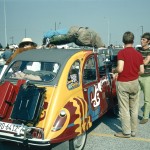
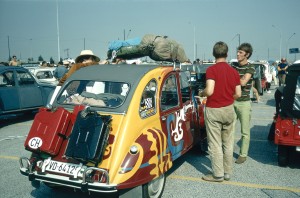 (English below, Francais au-dessous)
(English below, Francais au-dessous)